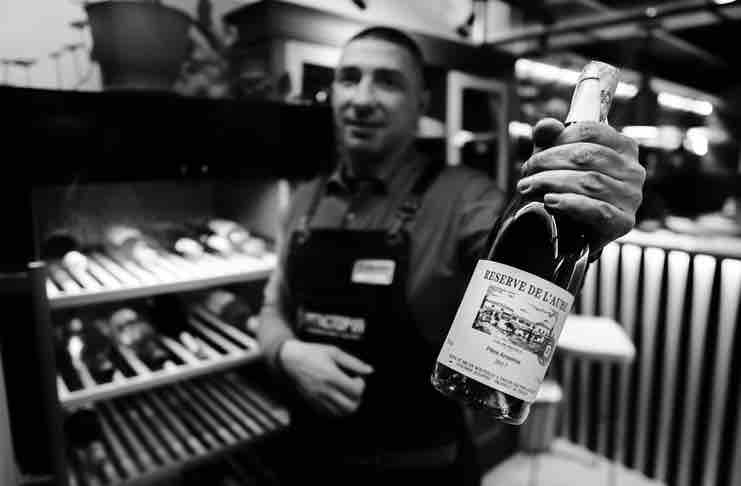Looking for a short guide about best wine storage practices? You’ve reached the right place. White and red (and sometimes even pink) wines have become a staple in many households and food establishments. Besides being a crowd-favorite, some types of wine do get better with age.
But wine can still go bad, even in an unopened bottle. This happens more often than you’d think, primarily because of improper wine storage.
So before you buy white wine online or head to liquor stores in the United Kingdom (UK) for your favorite red, intending to save it for later, consider the following best practices on proper wine storage:
1. Know your wine first.
Before thinking about storage, you must first make sure you know the type of wine you’ll keep as different kinds of wine have varying light, temperature, and humidity requirements. Here are some guide questions you can use to get started:
- What type of wine are you keeping? Is it white wine, red wine, or champagne?
- Is the wine full-bodied, light, dry, sparkling, or sweet?
Besides the wine itself, you should also consider how long you plan to store it and whether it will remain in a wine cellar or on display in your home.
Only after you know these things can you plan its proper storage.
2. Keep all opened bottles in the fridge.
No matter what kind of wine it is, always keep an opened bottle in the fridge, especially if no cool room is available for your reds.
Keep in mind that the wine longevity in storage varies depending on the wine type and the amount remaining in the bottle. If there is one-third of the liquid left, the duration of storage decreases because the oxygen level inside the bottle triggers oxidation. Of course, you can remove the air from the bottle to reduce the oxidation rate and extend wine storage time.
Here are the maximum length of time you can keep an open bottle of wine in the refrigerator:
- Champagne and other sparkling wines – up to three days.
- Rosé and light whites – up to seven days.
- Other white and red wines – up to six days.
- Fortified wines (e.g., sherry or port) – up to four weeks.
3. Prevent ‘lightstruck’ wine.
When learning about wines, you might encounter the term “lightstruck,” which describes the condition of the beverage after being exposed to ultraviolet (UV) rays.
Exposure to sunlight and fluorescent and incandescent light causes the amino acids in wine to oxidize, ultimately leading to a change in wine flavor.
This is the primary reason why wine cellars and other storage facilities are kept dark.
White wines are particularly susceptible to being lightstruck because they are commonly stored in clear bottles that offer less protection than dark-tinted ones.
If it’s not possible to keep the bottle entirely out of light, consider wrapping it lightly with cloth or store the wine inside a box. Also, if you are using wine cabinets, go with those that have UV-resistant or solid doors.
4. Store wines away from heat.
Besides light, high temperatures can also tamper with the flavor of your stashed wine, so make sure you keep it away from any source of heat.
When storing wine, make sure that the temperature is no higher than 70 degrees Fahrenheit to prevent the wine from aging faster than is desirable. Any hotter could “cook” the wine, leading to a flat flavor and aroma.
Maintain the range of 45 to 65 degrees Fahrenheit, if not the 55-degree “perfect” temperature. Don’t worry too much about the storage temperature running several degrees higher, provided the wine is used up within a few years from its release.
5. Don’t keep them too cool.
While you can store your wine bottles in the fridge for several months, it’s not recommended for long-term storage.
Since the average refrigerator temperature falls under 45 degrees for perishable foods, the resulting lack of moisture could dry out the cork and leave the wine more susceptible to air (which can cause oxidation and less-than-ideal flavors).
Avoid freezing your wine as well. When the liquid turns to ice, it might expand enough to the point of pushing out the cork.
6. Maintain consistent humidity and temperature.
More important than keeping your wines at the perfect temperature is ensuring consistency when in storage. One of the fastest ways to damage good-quality wine is keeping them somewhere with extreme, rapid, or frequent temperature swings.
Besides the “cooked” flavors, the fluctuation can cause the liquid to expand and contract, leading to air seepage and a pushed-out cork.
Of course, you shouldn’t fret too much with minor temperature changes as the bottles could be experiencing worse during transit from the winery to the store. The only way to know for sure whether a wine is ruined is to open the bottle and taste the wine.
7. Store some wines horizontally.
Horizontal wine storage helps keep the wine in corked bottles in their best condition. This is because the position ensures that the cork remains moist, even when stored long-term.
And while this isn’t necessary for screw-top bottles, it makes for an efficient way to keep your wines to maximize storage space and ensure easy access.
Keep Your Wine in its Prime
Wine can remain in its prime condition with proper storage.
If you’re buying several bottles to keep for years, make sure you apply all the best practices listed here so you can enjoy your wine every time you pour a glass.
Want to read more of our latest posts? Check out our review of Noreetuh in the East Village.
